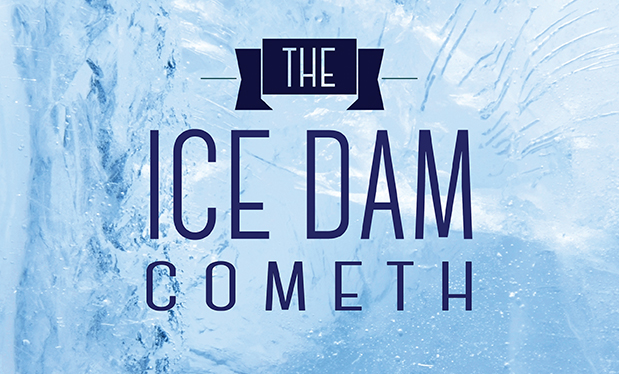There are trillions of stars to identify, millions of diseases to cure and countless dinosaurs to unearth. Who will seek out these unknowns? The Perot Museum of Nature and Science in Dallas is inspiring children to become the scientific leaders of tomorrow.
Funded by the Ross and Margot Perot family who donated $50 million to build the 180,000-square-foot facility, the Perot Museum of Nature and Science complements the school systems throughout the region. It provides opportunities for children to explore new ideas through tangible, galvanic exhibits where they'll study everything from dinosaurs to DNA.
Future scientists, mathematicians and engineers will find inspiration and education through tactile exploration areas, discovery stations, workshops, demonstrations, lectures and symposia, field trips, labs, after-school and summer classes, clubs and more. The museum exposes children to a world of ideas and concepts within one location.
Concept planning
The museum opened Dec. 1, 2012, but the planning that went into building a living science lesson took several years. In late 2008, KPost Company, Dallas, was approached by the museum's construction team to begin working through schematic designs and developing budgets for the roofing portion of the project. After almost three years of design input and pricing options, KPost was awarded the contract for the roof systems and roofing-related sheet metal work. At the time, the museum project was breaking ground, and KPost was just beginning to understand the uniqueness and complexity of the moving parts within the concrete cube that became the Perot Museum of Nature and Science.
At the project's onset, KPost was contracted to provide roofing solutions for the upper penthouses, built-up air handler unit, main roof, Level 5 office terrace and Level 3 roof located behind the cantilevered escalator structure. Throughout the project's duration, the design and construction teams requested KPost's assistance to manage some of the most challenging waterproofing scenarios KPost had ever encountered. As a result, KPost's contract grew to include the entry plaza, rear terrace, escalator gutters and drainage, as well as a unique waterproofing design at the built-up air handler's floor level.
The three areas with the most unusual construction challenges were the main roof and upper penthouses, escalator, and plaza and terrace.
Main roof and upper penthouses
As KPost undertook a pre-work survey of all contracted areas to confirm constructability, workers noticed the as-built conditions were not as architecturally drawn.
The structural engineer did not have a preferred method for terminations but stated the precast walls could move up to 1 inch as a result of wind and seismic activity. The architect, general contractor and waterproofing consultant asked KPost to help develop a watertight solution.
Because there was a 4-inch gap between the roof structure and vertical precast wall system, KPost recommended an expansion joint assembly for roof termination that consisted of a box frame and a knee wall to encapsulate the precast columns, as well as provide the required expansion. The KPost team installed a free-floating Forest Stewardship Council®-certified fire-retardant treated plywood cap that was attached to the precast panel but not to the fire-retardant treated wood box frame and knee wall. As a result, the expansion joint cover was supported and could be waterproofed independently of the roof system.
To further complicate matters, the eastern corner of the roof area had the same condition, but the structural steel column supports were fireproofed and could not be disturbed. KPost workers modified the standard expansion joint to allow for the expansion joint cover to be installed after the fireproofing was conducted and fireproofed again after installation, solving fireproofing and waterproofing concerns.
Escalator
The museum's escalator also was full of obstacles. The only access to the cantilevered escalator structure was through a window or from a catwalk where workers needed to use personal fall-arrest systems above a ladder set onto a glass roof. Additionally, KPost workers had to use Woods Powr-Grip® Vacuum Lifters to allow themselves to gently climb the sloped glass surface without scratching it. The suction cups had to be moved with each step to gain access to the escalator structure. Once workers reached the escalator, they repelled down the 30-degree slope roof to access work areas.
KPost was contracted to install three TPO-clad metal gutters within the waterproofed composite metal exteriors. KPost workers coordinated with the waterproofing subcontractor, precast subcontractor, glass subcontractor and plumber to provide internal watertight catch basins. The basins were strategically placed at multiple intervals to catch rain, sleet and snow.
Additionally, KPost workers fabricated and installed a gutter along the escalator structure as it tied into the precast structure. Installing a gutter to a surface with multiple, irregular architectural features was difficult as each required precise measurements for the entire gutter length. KPost workers fabricated a small mockup beforehand to ensure proper gutter attachment.
Plaza and terrace
Pour concrete on a roof? That's exactly what KPost was asked to do. But after the original design for the plaza and terrace areas did not work out as planned, KPost was asked to provide a solution. After three months of design, redesign and qualifications, KPost found a manufacturer, Carlisle SynTec Systems, that agreed to issue a 20-year warranty for the revised system.
KPost workers installed an 80-mil fleece-backed TPO membrane roof system over the entire plaza and terrace areas. The system required the wrapping of hundreds of rebar supports for future structural topping slab tie-in. For weeks, the KPost crew coordinated with the architect and multiple subcontractors to establish curb designs that could be fully wrapped and waterproofed and, most important, allowed for forming and placing of concrete stairs, ramps, water features and planters without compromising the design intent and constructability, as well as providing a watertight system.
After completing the installation, KPost brought in an electronic leak detection (ELD) testing agency that used a low-voltage method to find membrane breaches. After testing, KPost workers installed the required high-density insulation protection boards, drainage mats and protection mats. As a safety measure, a retest was completed before the structural concrete was poured. As visitors approach the museum's entrance, they walk on the carefully constructed system.
Some of the unique obstacles in the design were determining the optimal ratio of insulation to concrete because the plaza was rated for a certain weight capacity. The concrete surface that slopes to drainage channels had to be cut within the insulation, and drains were installed underneath. The ELD system also was left in place, requiring all cast-in-place rebar supports to be epoxy-coated to prevent interference with the ELD process.
Safety
Luciano Perez, KPost's safety manager, conducted routine job-wise safety inspections with a team consisting of the general contractor and multiple subcontractors to identify and correct safety hazards. Perez also conducted regular site visits to ensure KPost personnel's safety. A job-hazard analysis was completed before beginning each new task.
Additionally, Perez conducted weekly safety meetings on-site for all KPost employees with an emphasis on fall protection and use of personal protective equipment. All KPost superintendents are Occupational Safety and Health Administration (OSHA) 30-hour trained, and all workers are OSHA 10-hour trained. At peak periods, KPost had as many as 30 employees working at once but more than 50 employees were involved during the project.
Cube complete
As a result of KPost's diligent safety measures, the project was completed with no injuries or accidents. KPost crew members accumulated more than 12,137 hours during 13 months of challenging work and successfully completed the Perot Museum of Nature and Science project Oct. 31, 2012, ahead of schedule.
"KPost is proud to have worked with the entire construction team to help solve numerous issues and provide solutions to finish this extremely unique building envelope ahead of schedule," says Steve Little, president of KPost. "This project was smaller in square footage compared with other projects in KPost's portfolio, but it was exponentially greater in planning and field oversight because of the intense details, complexity and uniqueness of the project."
For its exceptional problem-solving skills and outstanding workmanship presented on the Perot Museum of Nature and Science, KPost received a 2015 Gold Circle Award in the Innovative Solutions: New Construction category and an honorable mention in the Outstanding Workmanship: Low-slope category.
Chrystine Elle Hanus is Professional Roofing's associate editor and NRCA's director of communications.
Project name: Perot Museum of Nature and Science
Project location: Dallas
Project duration: Sept. 15, 2011-Oct. 31, 2012
Roof system type: TPO
Roofing contractor: KPost Company, Dallas
Roofing manufacturer: Carlisle SynTec Systems, Carlisle, Pa.
Gold Circle Awards: Innovative Solutions: New Construction; Outstanding Workmanship: Low-slope



